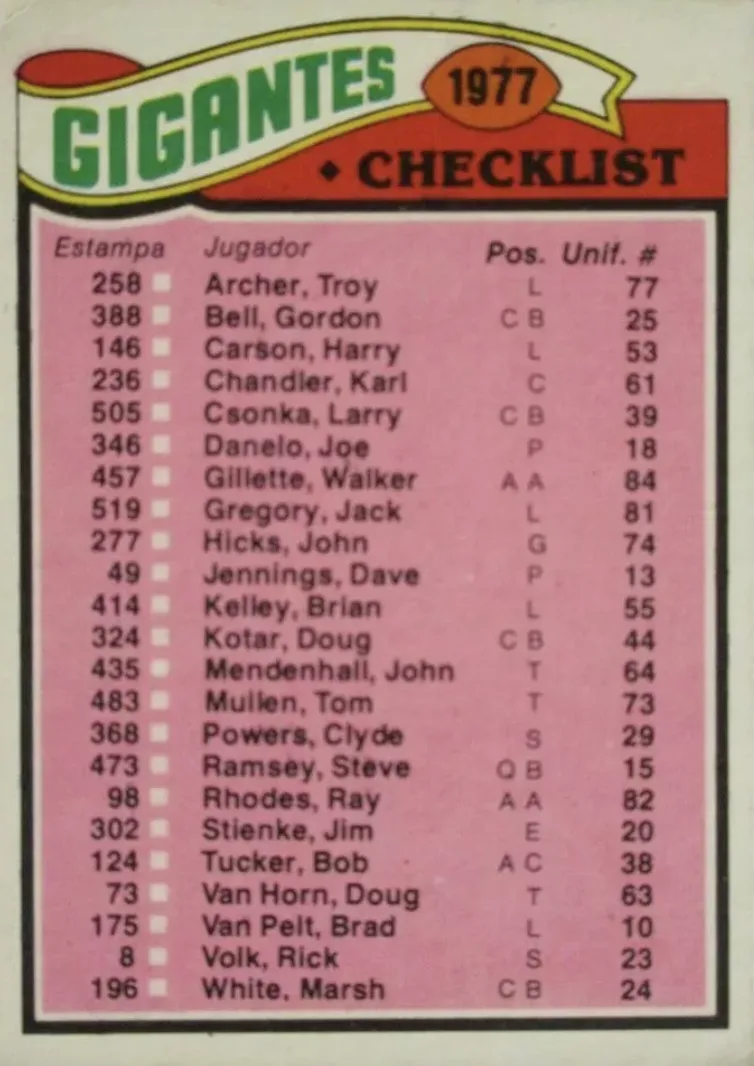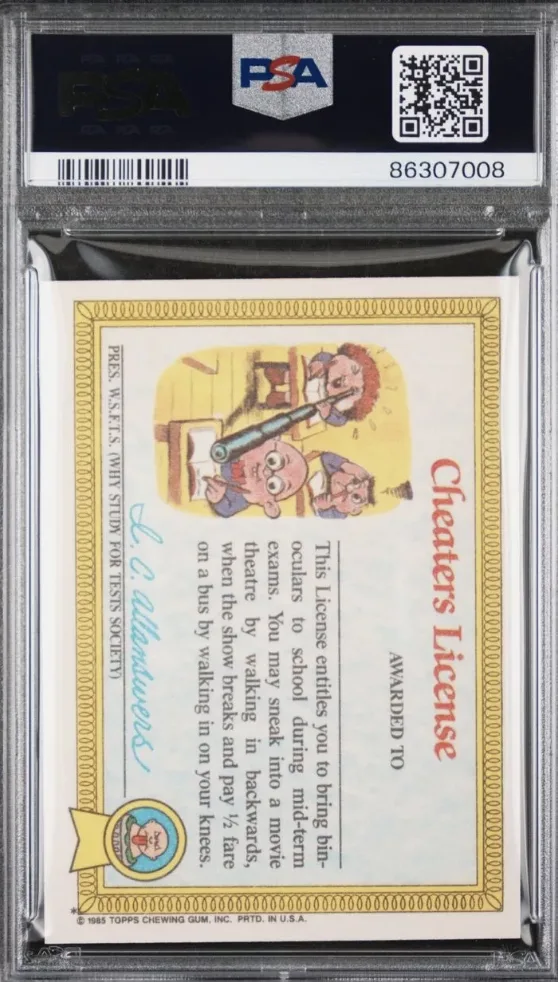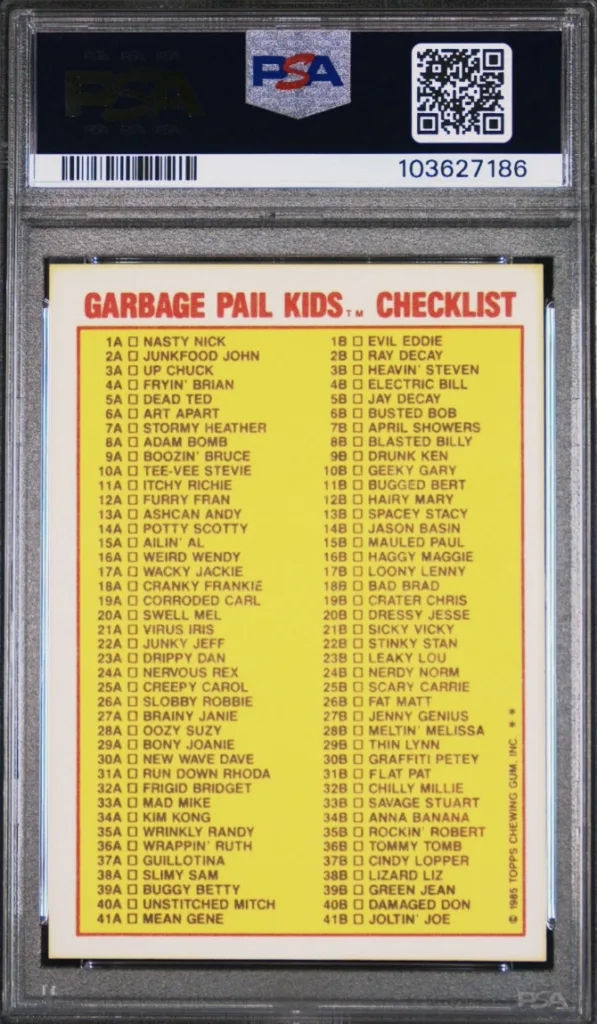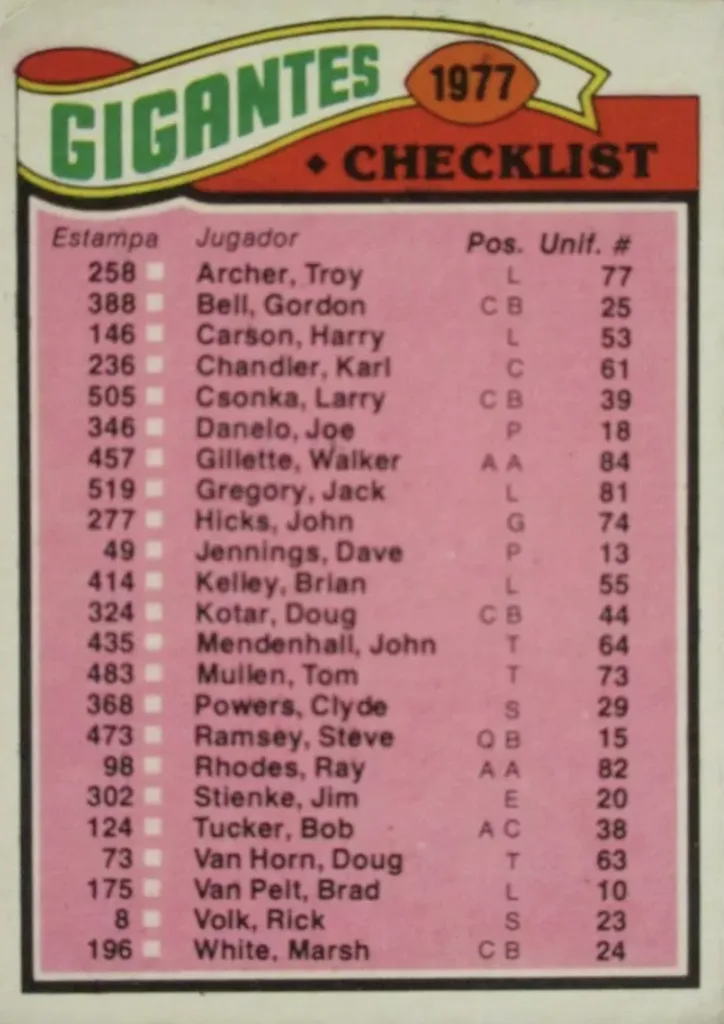
Checking Off the Best Checklists
You likely have never heard of Blony gum. But it plays a major role in the most sought-after checklist in trading cards.
Yes, my friends, this is the checklist column you’ve been waiting for.
You may think checklists are boring. They have tiny names and tiny checkboxes to keep track of your cards. If you end up with multiples? No room to note that. Plus, you had to randomly get a checklist in a pack, so you couldn’t even begin your accounting until you pulled one — then you’d have to go back and run through your cards, checking them off.
Collecting checklists? It’s odd, for sure. Most hold no aesthetic value. For any to hold monetary value, they had to remain unchecked and in PSA 7 or above condition — which means whoever had these cards as a kid was meticulously collecting and not tracking, or playing, or discarding. They had to hold a checklist in their hands and say, “you may be worth $60 some day if I just keep you away from pencils and creases and then pay $30 or so for grading and shipping.”
Still, checklists deserve their moment in the sun. So let’s start with the “Twin Blony.”
1. The Twin Blony
Blony was a Bowman gum brand. Its claim to fame was that it was a bigger piece of gum than any available at the time. Topps’ Bazooka had Bazooka Joe. Blony had…a smattering of trivia and games — until, that is, Topps purchased Bowman in 1956 and shifted their inserts to Archie characters.
In 1957, Topps Football printed a checklist. An innocuous, run of the mill checklist. Until someone decided to swap out the “produced by the makers of Bazooka” ad at the bottom…
…with “produced by the makers of Twin Blony.”
And thus was born the “Twin Blony” checklist.
What are they worth? Who knows. Hundreds, at most, in poor condition, thousands in decent condition? The point is, if you want to be a little weird and start getting into the checklist scene, you could essentially get the grails for a couple hundred dollars, total.
2. A “Check List”
One fun fact about the early checklists is that they weren’t “checklists” at all — they were spelled out as “Check List” with two words.
In 1962, Topps ditched the space, but — as you can see below — old habits die hard, and while it was one word up top, it remained “Check List” on the actual checklist card, as No. 367.
3. “A Mickey Mantle Card”
In 1967, the Topps Baseball checklist featured Mickey Mantle’s head. It is relatively insignificant for the design, but it is — if you stretch your imagination and the limits of what makes something a player’s card – “a Mickey Mantle card.” And it can be had significantly cheaper than a Twin Blony.
Granted, there were “team photo” checklists before, which technically featured all kinds of All-Stars, but this was the first that explicitly featured Mantle (or at least his head), solo.
It happened again in 1969 — solo Mantle on a checklist. And the latter may be even more significant, as Mantle retired in March of that year, before the season even began. It doesn’t have a giant effect on the pricing, as you can get both for under $15 if you don’t mind penciled-in boxes and a couple unsavory corners, but it does offer an interesting twist on checklist lore.
4. Adam Bomb
You start to tread in dangerous water when you declare one of the most iconic cards of the last 50 years “a checklist,” because a checklist being on the back of a card is kind of a different thing than a card with a bunch of names and tiny boxes next to it on the front. But Adam Bomb — the most famous Garbage Pail Kid — is a checklist.
Sometimes.
Other times, it has a “Cheaters License” on the back. If you go by PSA’s grading, the checklist has 1,309 cards registered and graded, while the Cheaters License version has 1,684, which means that the checklist version is the rarer of the two.


There isn’t a gigantic discrepancy in demand, and if you’re going to buy an Adam Bomb, you aren’t turning it backwards and making it part of your “checklist collection.” But hey, if you find yourself having to choose between the two, isn’t an unmarked version with all the clever names (“GuilloTINA,” for instance) a better experience than a Cheaters License?
5. Any Team from the 1977 Mexican set
RIPPED has covered the 1977 Topps Mexican Football set before. It’s a cool, little-known series that’s familiar but still just a little bit “off,” with the same cards printed in a different language. And the checklists are an easy way to get in the “Spanish team name” game. Just be sure to go after the individual team checklists and not the overall one.
There’s a fun twist to collecting the Mexican set checklists — they generally have higher values than the regular common cards. This is your collection and your choice, but if you’re going to dive into the weird world of Mexican series collecting, you might as well get a little funky inside the weirdness and go after the checklist, right? Do you really need that Doug Kotar?
